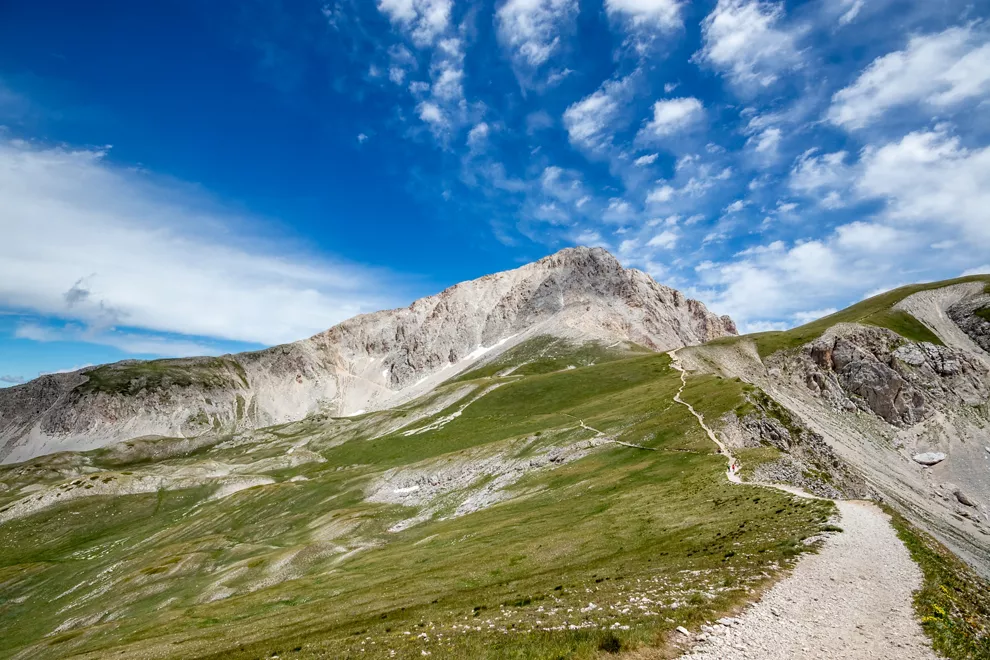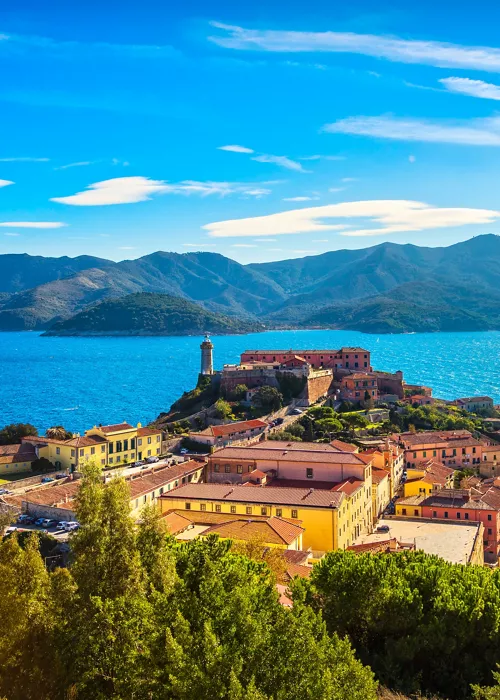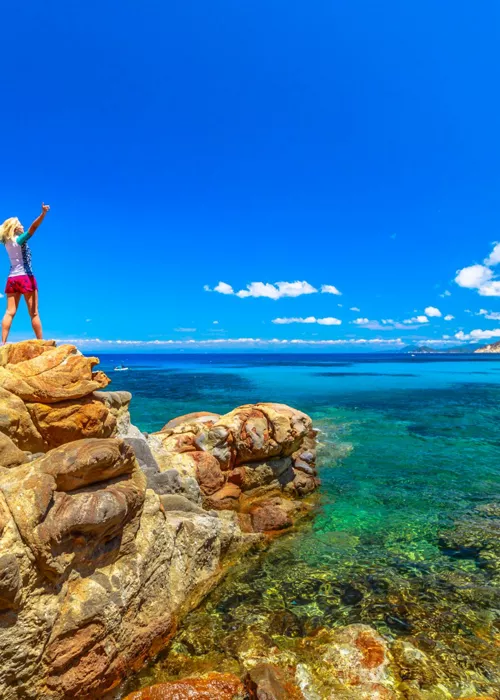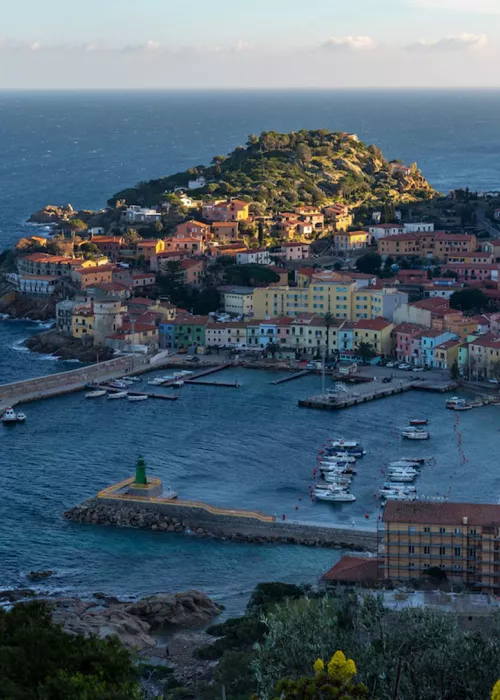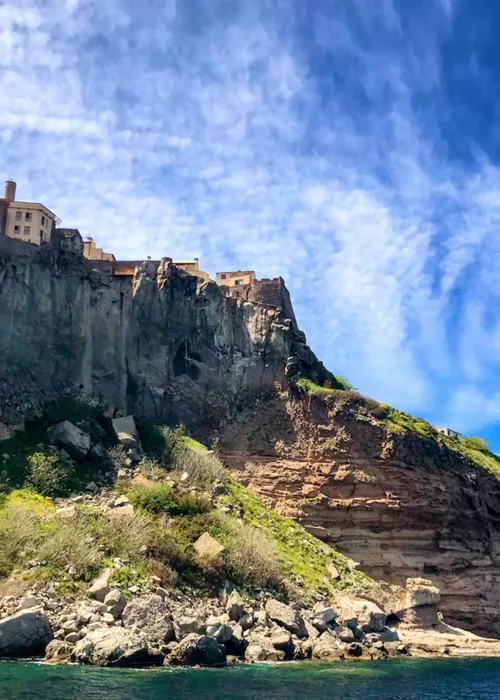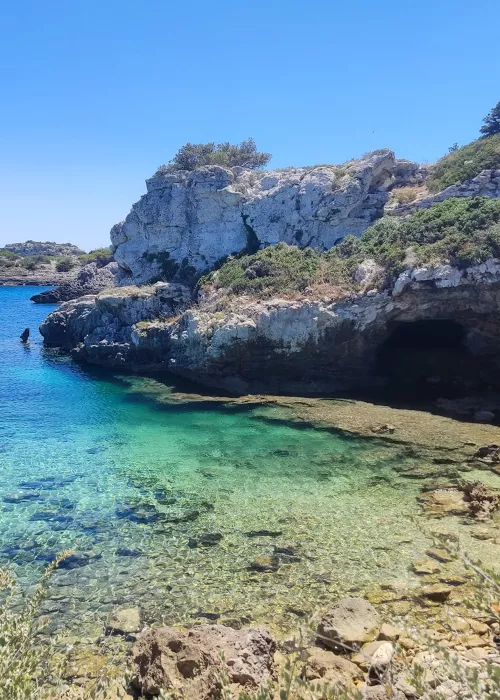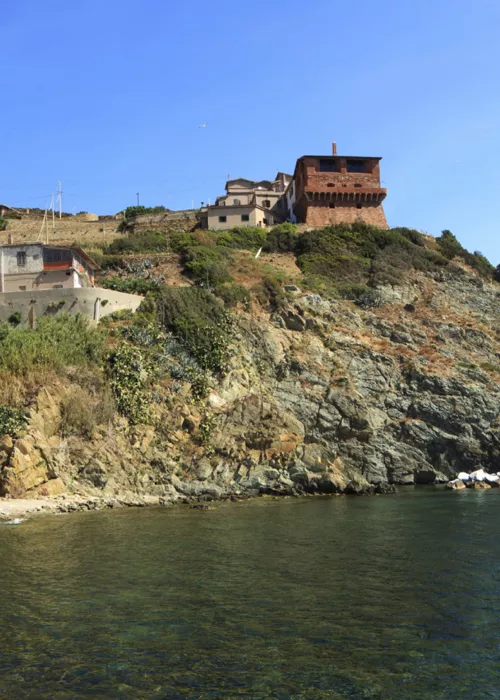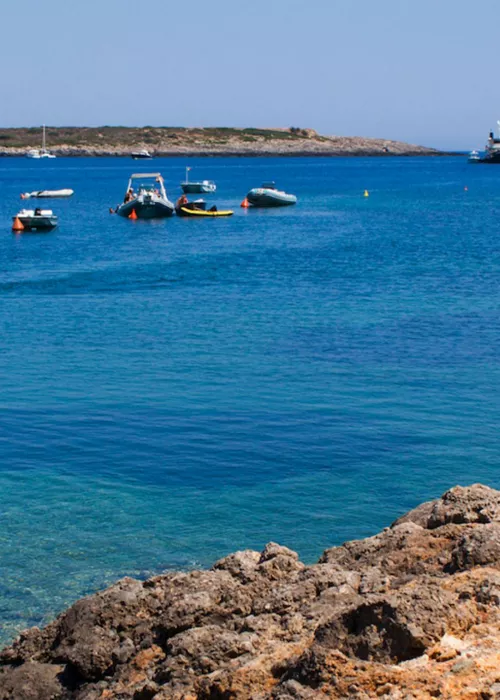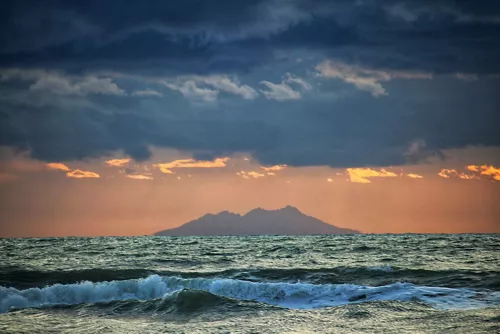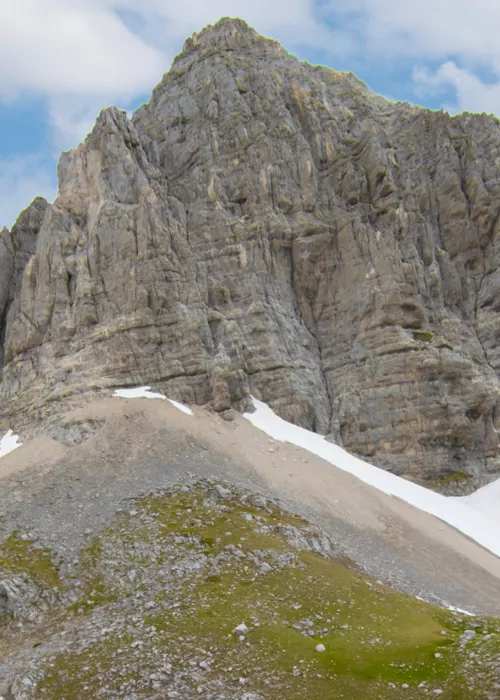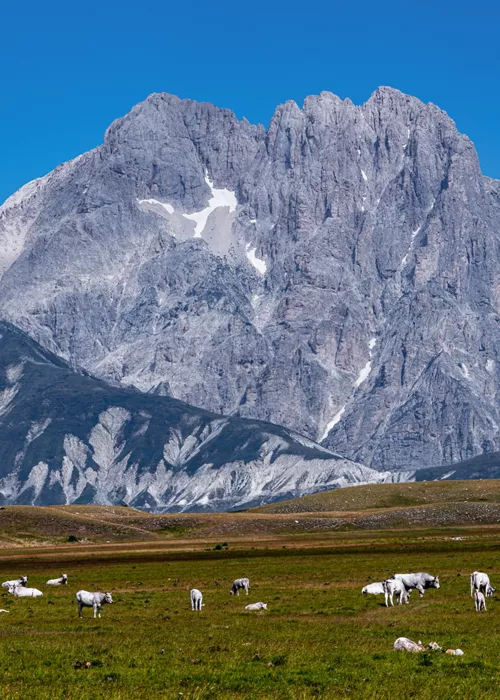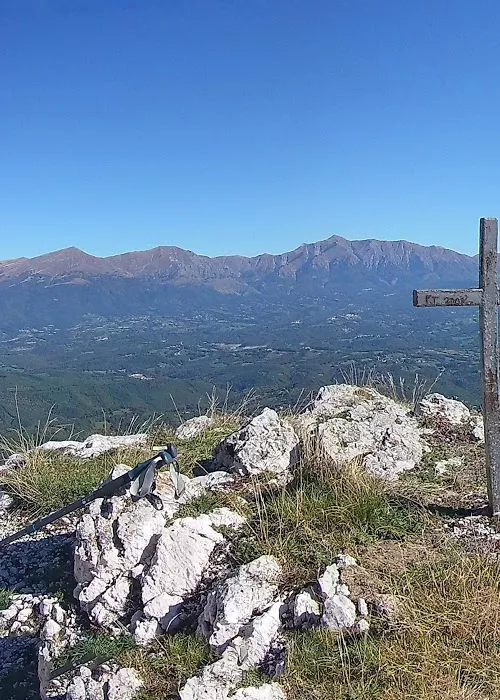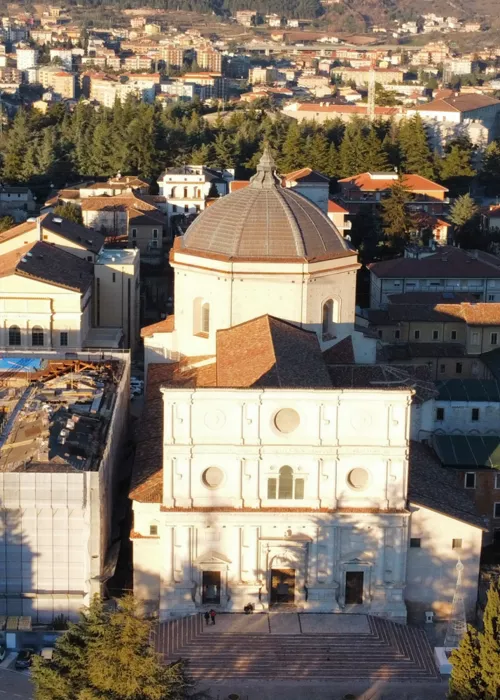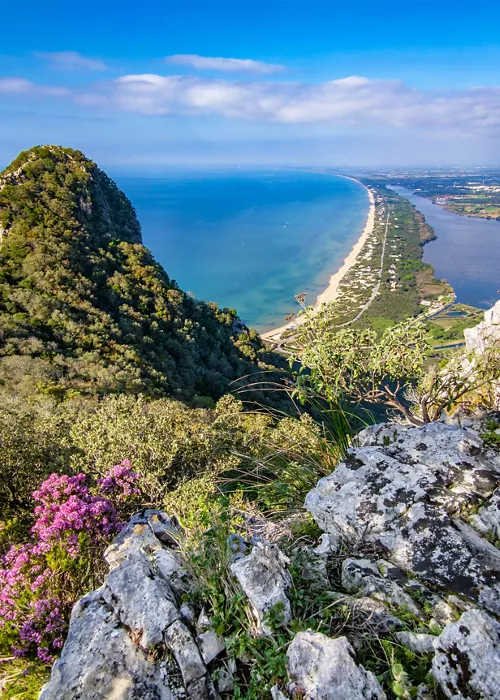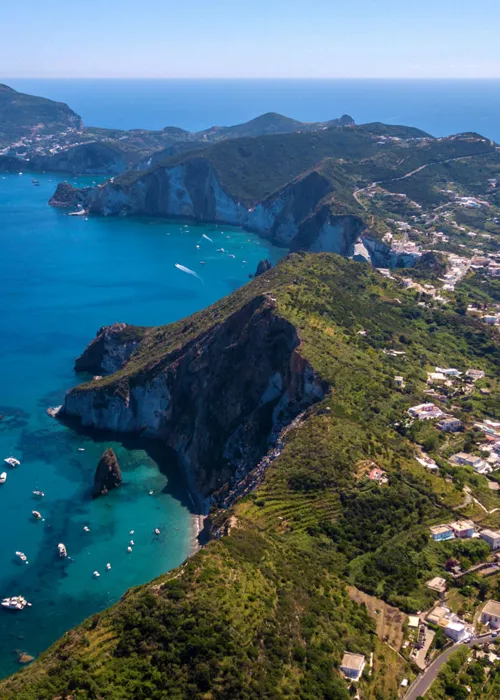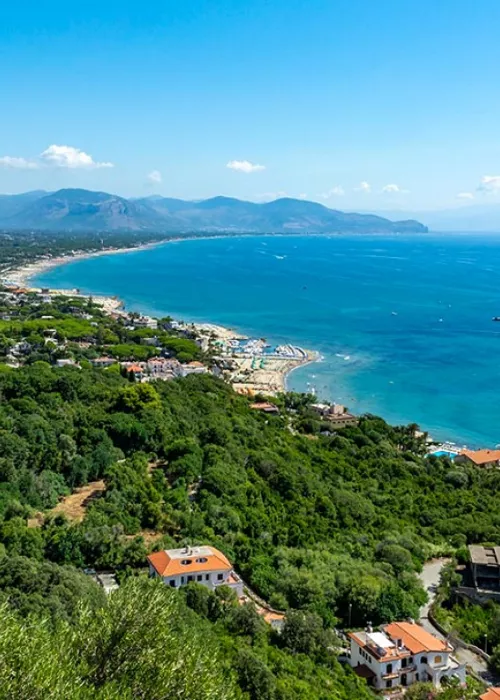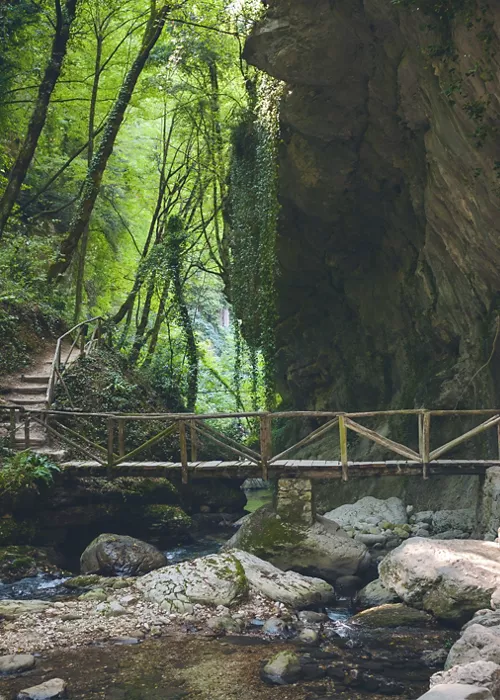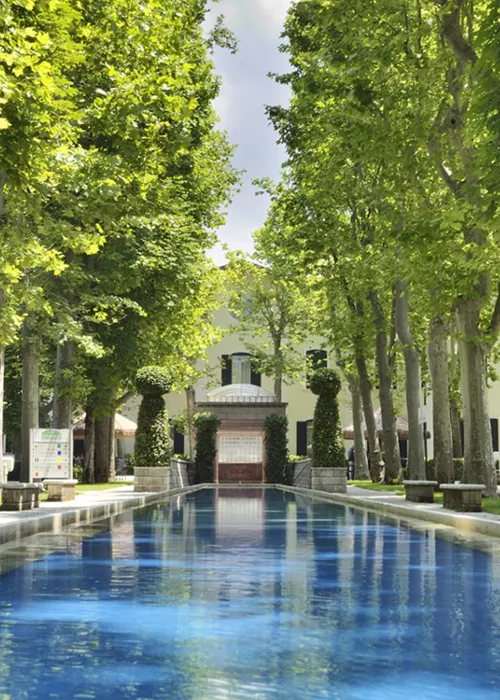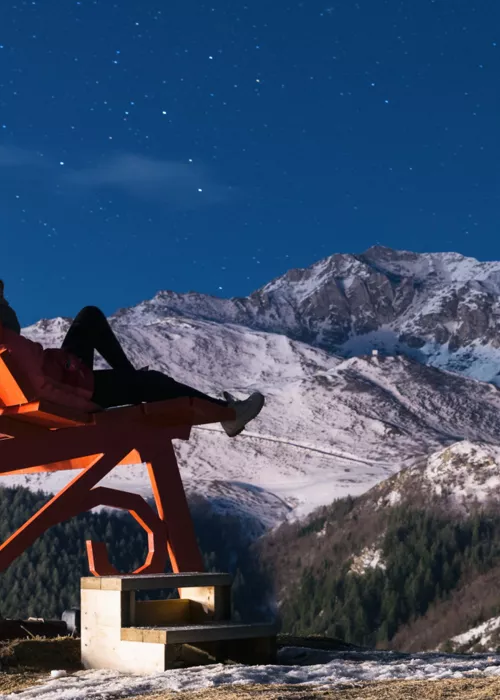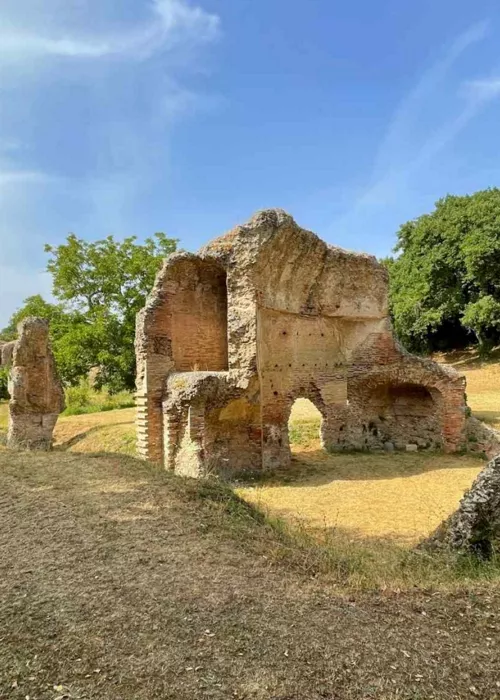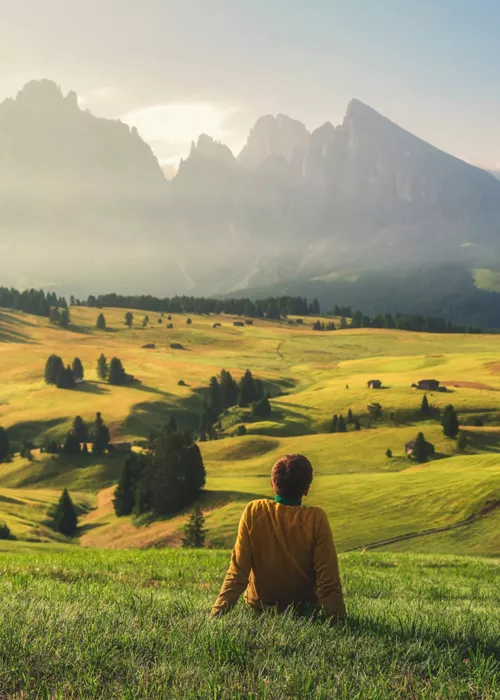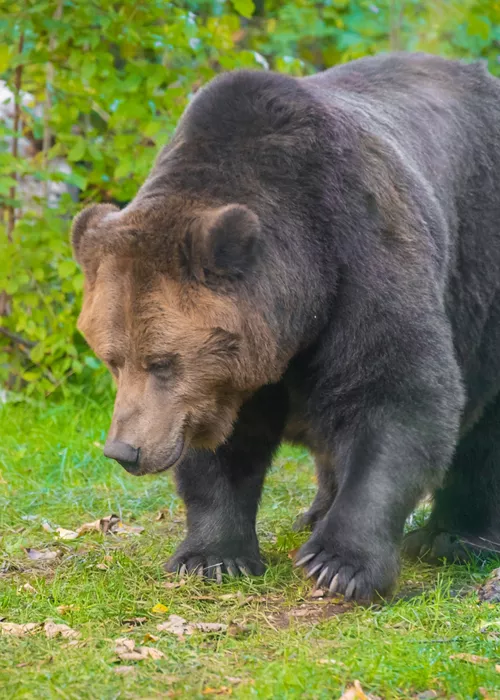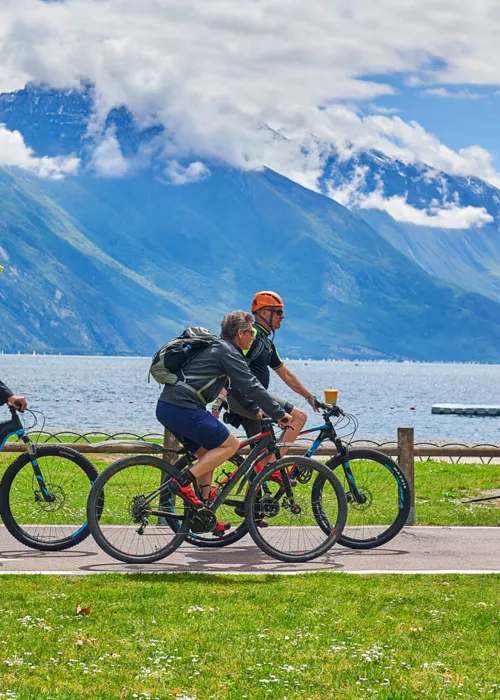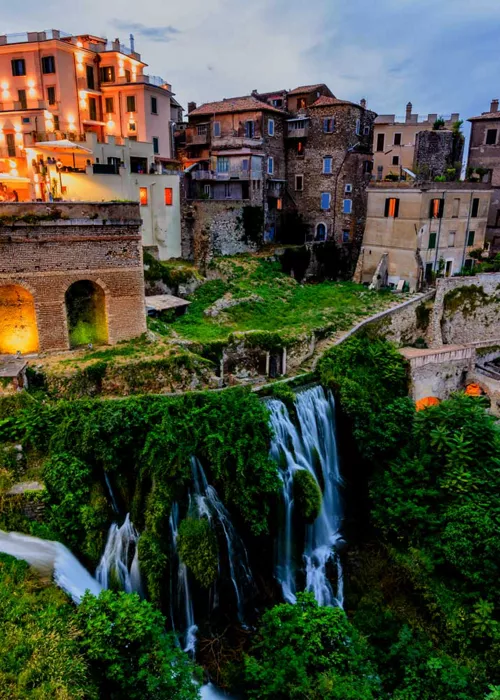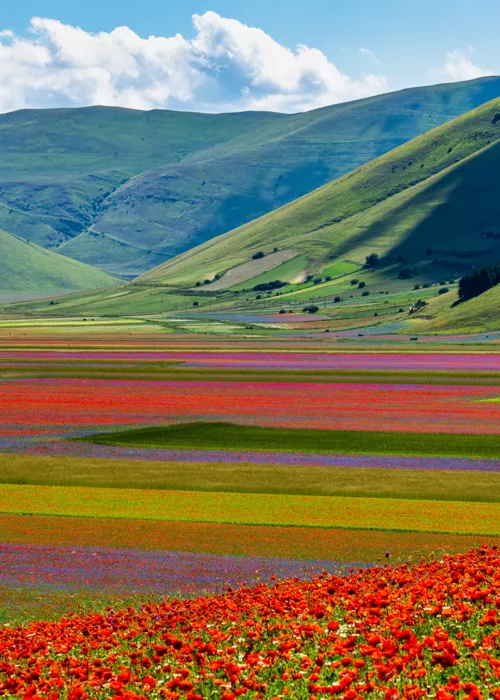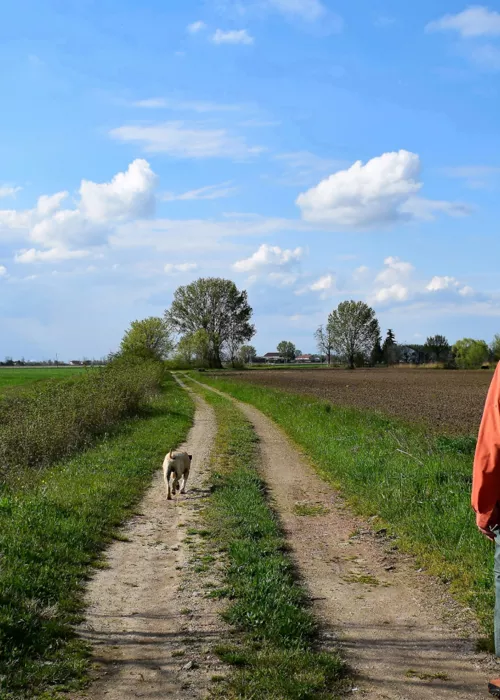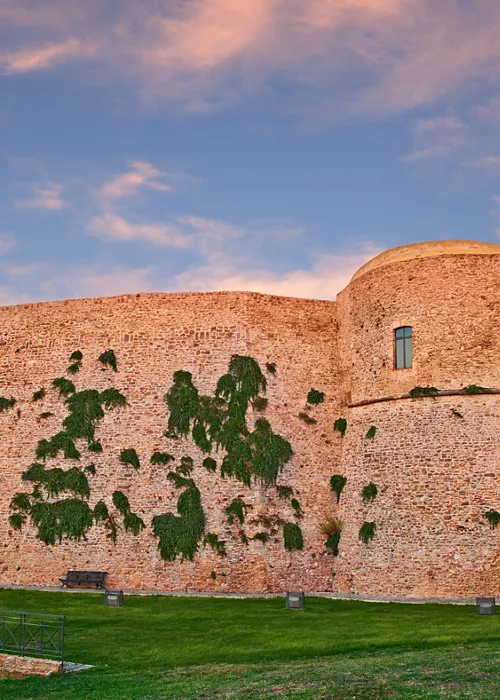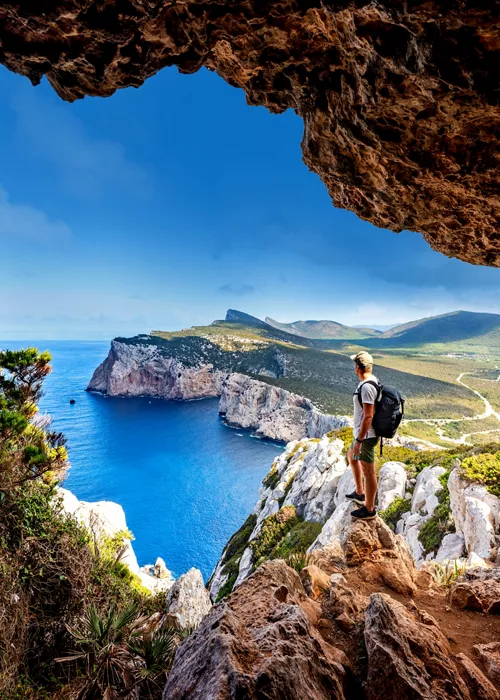Five National Parks in Central Italy - islands and legends
4 minutes
Take back nature and its boundless spaces with a totally green holiday: here are five not-to-be-missed parks to discover in Central Italy, with breath-taking mountain and marine landscapes boasting a wealth of traditions and a dash of mystery. Since beauty is always closer at hand than you may at first imagine.
National Park of the Tuscan Archipelago
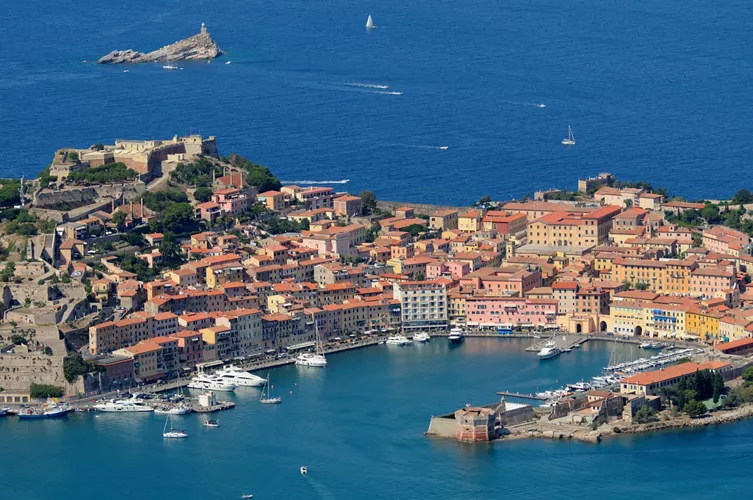
For people fascinated by island jewels
Six islands crammed with nature, plus a myriad of smaller islets, make up this entirely marine park in the Tyrrhenian Sea, starting with Elba. Then come the smaller and more picturesque islands of Giglio, Capraia, Pianosa, Gorgona, Giannutri and Montecristo, the only completely uninhabited one with no services yet rich in archaeological sites going back thousands of years. Everything can be explored on foot along the hiking trails crossing the Mediterranean scrub, which in spring explodes with spectacular colours, scents and flowers. Start with the "Grande Traversata Elbana”, the main excursion itinerary across the largest island where trips with mountain bikes and on horseback are also possible. Other places worth a visit include the "Orto dei Semplici Elbano" botanical gardens with native natural and medicinal plant species and the Sanctuary of Butterflies home to several very special varieties. Other destinations include the historic fortress of Volterraio and the ancient iron mines in the Mining Park (active until the end of the last century). The underground Ginevro Park can also be explored. The sea offers spectacular diving opportunities and interesting sightings in the Cetacean Sanctuary.
Sibillini Mountains National Park
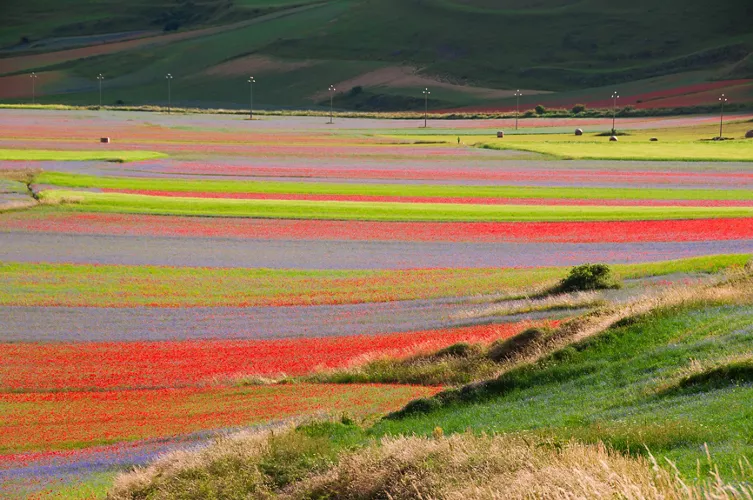
The legend of the mysterious Sibyl
The Kingdom of the mysterious "Antro della Sibilla", the mountain cave of the prophetess Sybil famed for her oracles, who is also the subject of a museum in the small village of Montemonaco. The area can be explored on foot or bicycle along the numerous urban routes unwinding between characteristic fortified Mediaeval villages. The nature trails are accessible to everyone, some even with strollers and wheelchairs, while guides are also available for more challenging itineraries in the wilder mountain-top nature over the ancient paths used by shepherds: the hiking route of the Great Ring of the Sibillini Mountains takes in the entire mountain range, while motorbikes, cars and campers can follow the Grande Via del Parco and six circular routes. The beech woods of the park are also home to the Chamois Wildlife Area and the Butterfly House and Garden. The plains around Castelluccio di Norcia are characterized by spectacular spring flowering and the taste of typical local lentils. Norcia was also where St. Benedict was born and is the starting point for the trek named after him.
Gran Sasso and Monti della Laga National Park
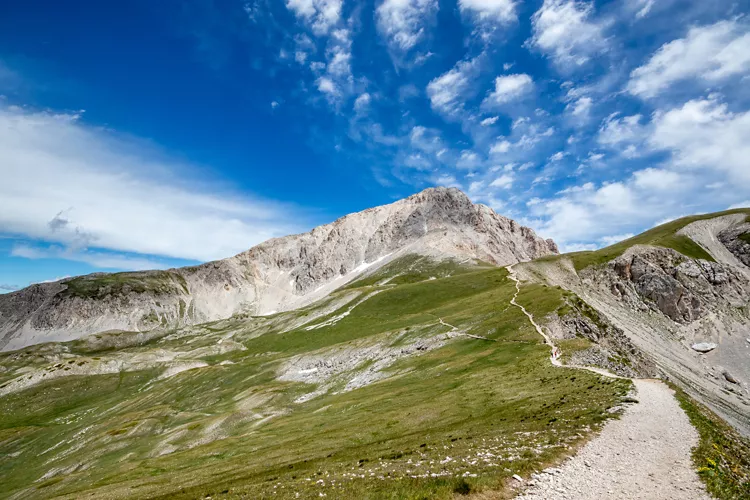
The nostalgia of popular traditions
Woods, lakes, rocks and grasslands, as well as historic villages and archaeological sites, castles and abbeys, caves and hermitages all help design the pure mountain landscapes of this park populated by Apennine chamois. The whole area can be explored on foot, bicycle, horseback and even canoe over the very long "Sentiero Italia". Qualified operators with joelette strollers are on hand to accompany the disabled, while the Gran Sasso Horse Trail is the longest in Italy and fully equipped for horses and riders. There are also a great many wine & food itineraries among the numerous excellences of this territory that contribute to its strong identity. Folk lore traditions are equally kept alive by splendid costume festivals, and strictly open air historic and popular re-enactments. Treat yourself to a wellness experience at the Acquasanta Spa, already renowned in Roman times, fine food in Amatrice (home of the famous sauce) and an unforgettable visit to L'Aquila.
Circeo National Park
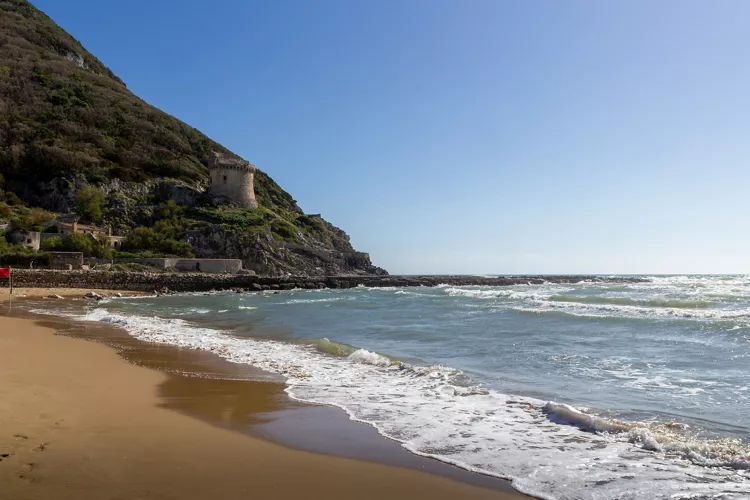
In the footsteps of Ulysses
Characterized by the Circeo promontory and its mysterious profile that legend attributes to the sorceress Circe, who bewitched Ulysses on his journeys hereabouts. The Selva di Circe forest area is also named after her and can be explored on foot and bicycle along many paths. The Park has a coastline edged with golden sandy dunes that in spring light up with multi-coloured blooms. There are also four coastal lakes. The site is readily accessible even to the disabled thanks to flat paths convenient even for wheelchairs. A nature path for the blind is also integrated into the botanical gardens of Villa Fogliano. Only the Circeo Promontory hiking trail is more difficult, crossing the mountain entirely up to the Circe peak itself. The Natural History Museum highlights the entire natural environment as well as the archaeological heritage associated with numerous prehistoric finds, especially from sea caves, and the remains of villas, springs and necropolis. Do not miss a visit to the enchanting archipelago of the six Ponziane islands, including the uninhabited Zannone isle included in the National Park for its wealth of biodiversity. The towns of San Felice and Sabaudia are also well worth a visit for excellent diving.
Majella National Park
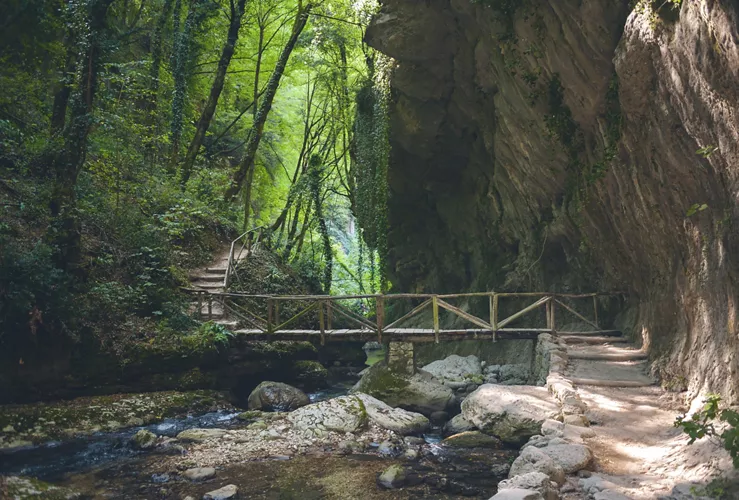
The mountain for everyone
The wild nature of a mountain park overlooking the sea, its rounded peaks clad with beech woods over more than half the territory where wolves and chamois roam. Here, natural Paleolithic caves hidden away were once inhabited by hermits such as Pietro da Morrone, who later became Pope Celestine V. The "Walking with Celestine" itinerary is specifically dedicated to the hermit Pope: a 90 km route best suited to more expert hikers divided into six stages to be covered exclusively on foot along the paths taken by Celestine V between the valleys and hermitages. Many other routes are readily accessible even by families and the disabled. Others cater for mountain bikes, cross-country skiing and bridleways and are all often served by equipped picnic areas. The Park Trail entirely crosses Mount Majella at a higher altitude with more demanding paths. Visitors can also relax in one of the most beautiful villages in Abruzzo (and Italy as a whole): Caramanico Terme. The spa waters of this ancient centre meet the green Orfento Valley where the European otter and peregrine falcon live, especially thanks to its differences compared to the other, much more arid and rocky valleys. There is also the opportunity for volunteers to experience work to safeguard and manage the protected area. A visit to nearby Sulmona is also recommended, not the least to enjoy the famous confetti made here for many centuries.

